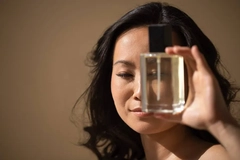Cosmetics Europe calls for amendment to EU wastewater directive after “blatant miscalculation”

Cosmetics Europe is calling for a reassessment of the Urban Wastewater Treatment Directive (UWWTD) following recently released evidence suggesting that the cosmetics industry’s contribution to toxic wastewater is overestimated by at least 15 times.
The call comes after the European Commission (EC) granted access to methodology documents and substance data used in its Impact Assessment. Cosmetics Europe argues that the assessment wrongly attributes several substances to the cosmetics sector, including chemicals not used in cosmetics or even banned from such use.
“We want to pay our share,” says John Chave, director general of Cosmetics Europe. “But we cannot accept such a blatant miscalculation. When correctly assessed, cosmetics account for only 1.54% of the total toxic load, not 26%. Legislation cannot be based on mistakes of this magnitude.”
The association is now urging lawmakers to adopt a substance-based and sector-neutral Extended Producer Responsibility (EPR) model.
“A fair application of the Polluter Pays principle is only possible through an EU-harmonized and substance-focused approach,” the organization says. This model would promote ecological practices by encouraging all industries using certain substances to share financial responsibility for wastewater treatment upgrades.
.jpg) The organization calls for a fairer model that reflects actual pollutant sources rather than broad sector labels.Challenging the current EPR
The organization calls for a fairer model that reflects actual pollutant sources rather than broad sector labels.Challenging the current EPR
The revised UWWTD, which came into effect in January, includes an EPR scheme requiring cosmetics and pharmaceutical sectors to fund at least 80% of the costs for upgrading urban wastewater treatment facilities across Europe. The aim is to reduce micropollutants and guarantee cleaner water for European citizens.
However, the current EPR framework assigns responsibility based solely on sector classification, without considering the specific substances discharged by each sector.
Cosmetics Europe argues that this setup unfairly targets its industry and fails to reflect the reality of pollutant sources. “The EPR scheme as defined today leaves no scope for correcting the contribution from cosmetics,” the organization states.
Palmitic acid, a substance attributed solely to the cosmetics sector, is common in household products and food sources such as butter, meats and cheeses. Other substances listed such as permethrin and nonylphenol diethoxylate are either not used in cosmetics or are banned.
.jpg) Cosmetics Europe supports paying its share but rejects a “blatant miscalculation” of its environmental impact.New evidence questions original data
Cosmetics Europe supports paying its share but rejects a “blatant miscalculation” of its environmental impact.New evidence questions original data
The original EC analysis was based on a list of substances from the Joint Research Center (JRC) database, referenced in the 2022 EPR feasibility report.
Following a formal request for access to information, the EC provided Cosmetics Europe with detailed information on how the list was compiled and used.
Upon reviewing the data, the personal care association conducted its own analysis and determined that many substances had been misattributed or misclassified. This discrepancy has raised concerns about fairness and the scientific basis used to draft key environmental legislation.
Cosmetics Europe is now urging EU policymakers to revisit the directive’s financing mechanism and correct what it sees as a damaging and misleading portrayal of the sector.
“Mistakes of this scale have also seriously damaged our industry’s reputation,” says Chave. The organization believes that a harmonized list of micropollutants, applied equally to all sectors, would lead to more accurate environmental policy and fairer cost distribution.
This news comes after Cosmetics Europe and the European Federation of Pharmaceutical Industries and Associations filed legal action against the EU General Court earlier this year, to oppose the revised directive.












